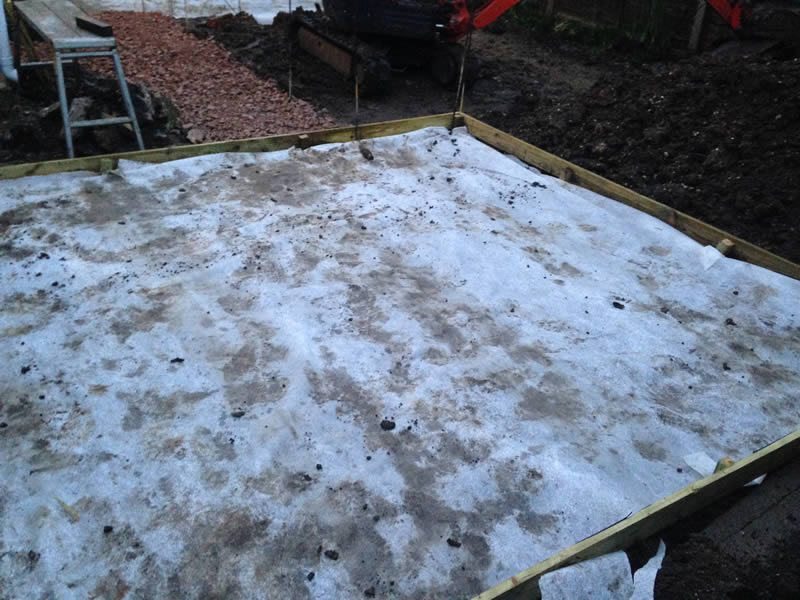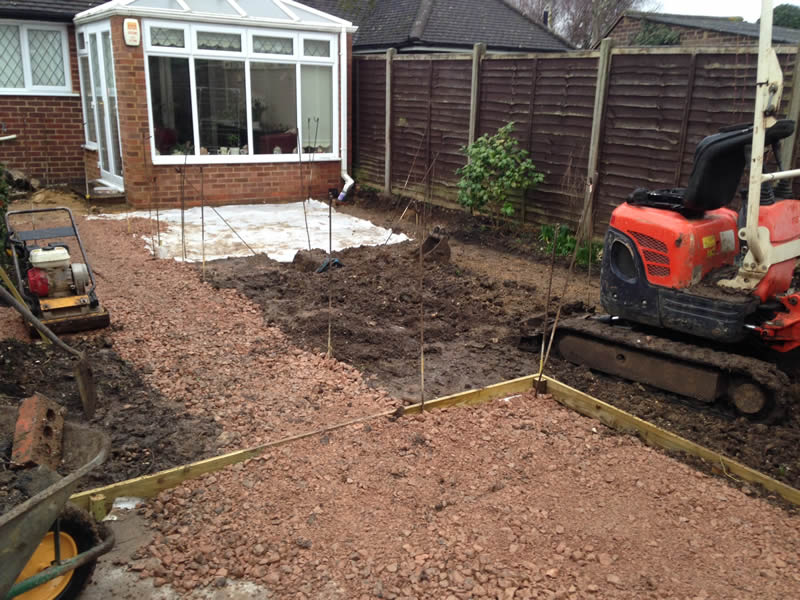An artificial lawn in the making…
As a landscaping company we lay a lot of natural turf in our day to day work but we are also asked to install artificial lawns too. This month we are installing an artificial lawn in a garden in Maidenhead for a client who requires a low maintenance garden. This does not mean however sacrificing the size of her lawn as will be shown in next month’s blog when the finished results can be seen.
Artificial grass has many advantages over the ‘real stuff’ and can make for a stress free life in the garden with its low maintenance appeal especially in the summer months when cutting the grass can become a bit of a chore. Read more about the pros and cons in this blog post. In fact artificial grass can be used for many things – from replacement lawns to roof gardens, to putting greens and for areas around swimming pools – to name a few. The choice of grass available is varied in terms of length, colour and the texture of the grass. For example you can choose a more olive or darker green colour and even a softer feel grass if you so prefer. For the more adventurous there are even different coloured grasses available, such as red, blue or even black if this fits in with your style (perhaps best used in a contemporary garden or a children’s play area)!!
Back to our garden in Maidenhead – and facing all that the January weather has to throw at us! – we have lots to do before the artificial lawn is ready and this involves making sure that as with all our builds the right foundations are put in place at the beginning of the landscaping. This involves several stages of prep work before the artificial grass can be laid.

The first step was to dig out the area and to lay timber edging to secure the shape of the future lawn. Next a terram membrane is laid on top of the excavated area. The membrane is a critical part of the preparation stage as it provides a barrier between the soil beneath and so ensures that the artificial lawn is kept mud and soggy free whilst allowing drainage to occur. It also stops weeds and tree roots coming through into the new lawn.

Next, the membrane is covered with type 1 MOT scalpings (shown in the photo above), after which a two inch layer of sharp sand is laid over the scalpings to improve the drainage conditions and then the whole area is levelled and compacted down to achieve a smooth finish ready for the artificial grass to be laid on top.
Keep an eye out for my next blog which will reveal what a change this will make to our client’s garden!